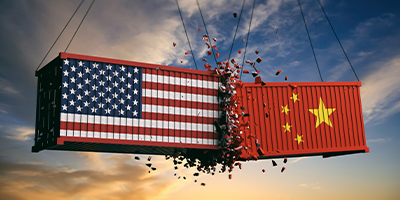
Commodity market insight
Keep up to date with our expert insight on the issues that matter
Expert pricing, news and analytics
Complete your details, and a member of our Sales team will guide you through the purchase process.
Commodity group
Content type
Region
Date
Coatings/Construction

ICIS Top 100 Chemical Distributors 2025

2025 Chemical Markets Outlook: Europe & Asia in Focus

5 “Known Unknowns” to watch for in 2025

2025 Key Trends – Global Chemicals & Energy

ICIS CEO of the Year Award 2024

Chemical overcapacity: right sizing for the future

The essential role of chemicals in modern healthcare

ICIS Top 100 Chemical Distributors 2021
Intermediates

ICIS Top 100 Chemical Distributors 2025

Does the Clean Industrial Deal (CID) go far enough to save European chemicals?

On-demand webinar: Insights and Trends Shaping the Automotive Industry

2025 Chemical Markets Outlook: Europe & Asia in Focus

Pathways for the global chemical industry to climate neutrality

5 “Known Unknowns” to watch for in 2025

Chemicals must respond to demographic destiny

On-demand webinar: ICIS Think Tank Live
Plastics

ICIS Top 100 Chemical Distributors 2025

90-day US-China pause sparks strategic rethink for US plastics

China’s Antimony Ban May Drive Up US PET Prices

Europe PET market mood turns bullish after spike in Asia upstream prices

Markets rally as US and China ease tariff tensions

What tariffs mean for European plastics buyers

What impact will a trade war have on Asian polyolefins?

Spotlight on Asia Pacific sustainability regulation
Base Oils

ICIS Top 100 Chemical Distributors 2025

2025 Chemical Markets Outlook: Europe & Asia in Focus

2025 APAC Key Trends – Chemicals & Energy / Spotlight on China, Japan, India and South Korea

5 “Known Unknowns” to watch for in 2025

2024 Key Takeaways – Global Chemicals and Energy

Chemicals must respond to demographic destiny

Consulting case study: Value chain integration

On-demand: US base oils outlook: Q4 dynamics and market shifts amid weak lubricant demand
Contact us
Partnering with ICIS unlocks a vision of a future you can trust and achieve. We leverage our unrivalled network of industry experts to deliver a comprehensive market view based on independent and reliable data, insight and analytics.
Contact us to learn how we can support you as you transact today and plan for tomorrow.
READ MORE

